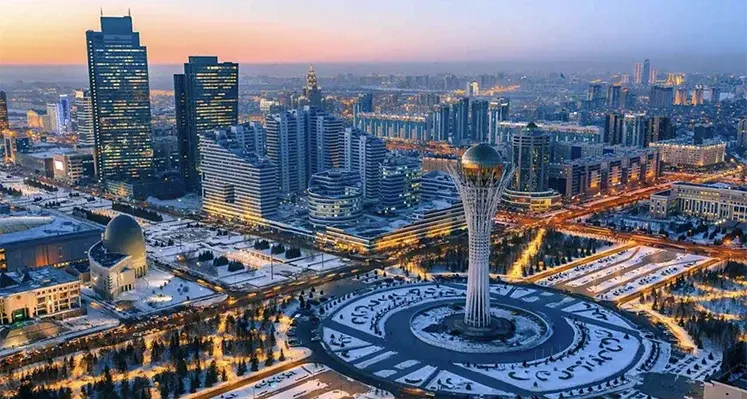Kazakhstan is changing the rules of the game for investors and its own future
Kazakhstan, one of the key energy producers in Central Asia, is initiating a difficult but strategically necessary phasing out of the long-standing policy of deep subsidisation of domestic gas prices. The reason is simple: the policy under which the country has been among the three world leaders with the cheapest fuel for the end user for decades has created fundamental economic distortions and systemic risks.
As a result, an acute energy paradox has emerged: having significant proven reserves of hydrocarbons and being an exporter of them, Kazakhstan is facing the growing risk of domestic shortages, faced with the progressive problems of its production infrastructure. The current reforms represent an attempt to carry out a complete reversal of the economic model of the industry, aimed at increasing its investment attractiveness and long-term sustainability.
Understanding the imbalance: an unsustainable model and its global context
Kazakhstan's gas industry has been based on an unsustainable economic model for years. Government regulation required gas processing plants to sell liquefied petroleum gas and petroleum products on the domestic market at prices that were significantly lower than the operating cost.
According to industry experts and relevant departments, with the cost of producing a ton of LPG at US$128-147, the regulated wholesale price was artificially fixed at US$82-96. Moreover, the official forecasts of the Ministry of Energy of Kazakhstan clearly illustrate the scale of the problem: for example, for 2025-2026, the estimated cost of marketable gas for Almaty and the Almaty region is US$98 per thousand cubic metres, while the wholesale price approved by mid-2025 for the same regions is almost twice as low. This approach automatically generated direct losses for each producer, making the core activity inherently loss-making and completely depriving it of incentives for development.
The industry, in fact, functioned as a hidden mechanism for nationwide subsidies, where losses from domestic sales were forcibly compensated by export earnings from other, more marginal petroleum products. Such a price disparity positioned Kazakhstan as a unique anomaly on the global energy map.
According to the latest data at the end of 2024, while the global average price of natural gas for the population was set at 0.086 US$ per kWh (a unit of energy used for correct international comparison), in Kazakhstan it remained in the group of the lowest in the world.
The abnormal availability of gas was high not only in absolute terms, but also in relative terms: in terms of the ratio of gas costs to average wages, according to research, Kazakhstan held a leading position in Europe, allowing residents to purchase up to 10,000 cubic metres of gas per year on an average income, which is an unattainable indicator for the vast majority of countries in the world. The situation reached the point of absurdity when a litre of LPG, a complex and energy-intensive product, cost consumers less than a litre of bottled drinking water.
Inevitable consequences: overconsumption, asset depreciation, and shadow market
The policy of affordability directly stimulated the formation of a culture of overconsumption, which led to a rapid increase in the burden on the entire gas system of the country. Statistics for 2024 eloquently confirm the trend: domestic consumption of commercial gas increased by 9% and reached 21.2bn m3, while consumption of liquefied petroleum gas increased by 5.6%, amounting to 2.42mn tons. Such steady growth, unsupported by corresponding increases in production capacity, is the root cause of the impending shortage.
At the same time, chronic underfunding caused by the loss of domestic sales led to critical physical deterioration of production assets. Official statistics, which record more than 400 unscheduled shutdowns at the three largest refineries in three years, indicate systemic risks. At such key facilities as KazGPP, 98% of high-pressure vessels have been in operation for more than 40 years.These facts indicate that the industry has reached the limit of its operational reliability.
In addition, the huge price difference between Kazakhstan and its neighbours has given rise to a thriving black market and illegal exports. Price arbitrage in the autogas market was particularly revealing: with a price in Kazakhstan of about US$ 0.21 per litre, in neighbouring Russia it was US$0.36. Kazakhstan, in fact, inadvertently subsidised consumers in neighbouring countries, exacerbating the shortage of supplies within the country.
Strategic response: a large-scale resource base expansion programme
The current reforms are part of a conscious transition to a sustainable and investment-attractive model. As a central element of the reforms, the Government has developed a multi-year roadmap providing for a phased but decisive increase in prices to economically reasonable levels by 2028.
Although such measures are painful for consumers, they serve as a powerful positive signal for investors and the industry as a whole, guaranteeing future profitability and predictability of work in the sector.
The central element of the new strategy is a large-scale programme to expand the resource base and processing capacities. The goal is to increase the production of commercial gas from the current 23bn cubic metres to 31bn cubic metres by 2030.
To achieve this goal, work is underway in several areas. In the field of production, the Anabai, Vostochny Urikhtau and Rozhkovskoye fields were commissioned by the end of 2023. In the period 2025-2026, the Zapadnaya Prorva, Tsentralny Urikhtau and Barkhannaya fields with total recoverable reserves of over 50bn cubic metres are expected to be launched.
A portfolio of capital-intensive projects is being implemented in the processing sector. The key is the construction of a new gas processing plant in Atyrau region, which will work on raw materials from the Kashagan field. The first stage of the project has a capacity of 1bn m3/year, which will be followed by the implementation of a second, larger installation with a capacity of 2.5bn cubic metres per year by 2030. Analysts consider the involvement of a reputable Qatari investor, UCC Holding, in the implementation of these projects as a powerful vote of confidence in Kazakhstan's reforms and investment climate.
At the same time, projects are underway to build a new gas processing plant in Zhanaozen with a capacity of 900mn cubic metres per year, and negotiations are underway to build a high-tech plant at the Karachaganak field with a potential capacity of 4bn cubic metres per year.
In addition to the construction of new plants, the programme includes other strategic projects. Among them are the environmental modernisation of the country's largest metropolis through the conversion of the Almaty CHPP to gas, the development of gasification in the northern and eastern regions to create new sales markets, as well as the expansion of the gas transportation system, including the construction of the second line of the key Beineu—Bozoi-Shymkent main gas pipeline. Work on the latter has already begun in April 2025, and the project itself will increase the pipeline's capacity to 15bn cubic metres per year, which is a prerequisite for sustainable gas supply to the country and transit to other regions.
Along with the development of production, the country's transit potential is also strengthening, which is confirmed by an increase in gas transit in 2024 by almost 10% to 69.6bn cubic metres. Against the background of the transformation of the energy balance in Central Asia, where neighbouring Uzbekistan has turned from an exporter into an importer, Kazakhstan is strengthening its status as a key transit hub, including for Russian gas supplies to the region.
Long-term vision and legislative support
The strategic goal of the reforms goes far beyond the stabilisation of the fuel market, as the main vector is aimed at the development of deep processing and the creation of a domestic gas chemical industry. The legislative framework is being improved to achieve these goals. In order to stimulate new production, an improved formula for the purchase price of gas from subsurface users was introduced in 2023, which has already been used by five companies ready to start commercial production in 2025. To create a culture of energy conservation and demand management, the Parliament has initiated a draft law “On Lean Gas Consumption”, which provides for the introduction of mechanisms for end-user responsibility, including digitalisation of accounting and the use of increasing coefficients for excess consumption. At the same time, a Roadmap has been adopted for the development of the gas engine fuel market, which creates projected domestic demand through the renovation of bus fleets and the expansion of the network of gas filling compressor stations.
Maturity test: the balance between the market and the new social contract
The implementation of such large-scale reforms is a serious test of the maturity of the economic system and society as a whole.
At the same time, by pursuing a market policy, the state strives to preserve the key elements of the social contract. This is confirmed by the digital project launched in 2024 to provide gas vouchers (discounts) for socially vulnerable segments of the population.
At the same time, the continuation of gasification programmes is indicative, which cover even small and remote villages where the construction of infrastructure is impractical from a purely commercial perspective. Thus, as of January 1, 2025, the country's overall gasification level reached 62.4%, providing 12.6mn people with access to gas. With almost 100% coverage of the western regions and large cities, the state is steadily moving into the centre of the country and setting a long-term goal to provide up to 90% of the population with gas in technically accessible areas by 2040.
This approach demonstrates that for the state, gasification is not only a commercial project, but also a tool for improving the quality of life and developing regions, which is a key factor in ensuring social stability during a difficult but necessary transition period.









